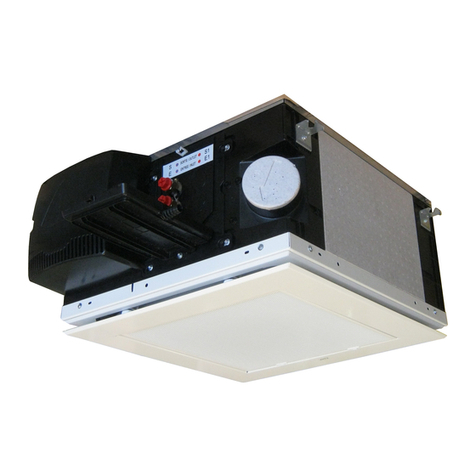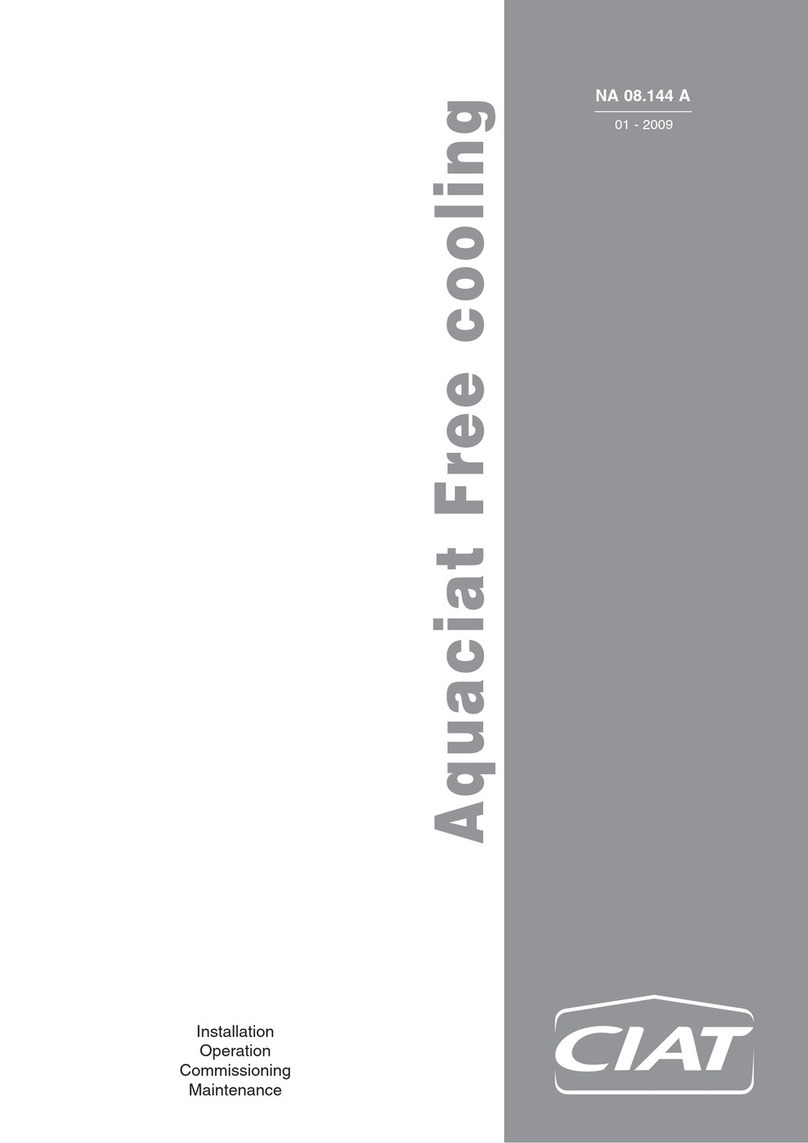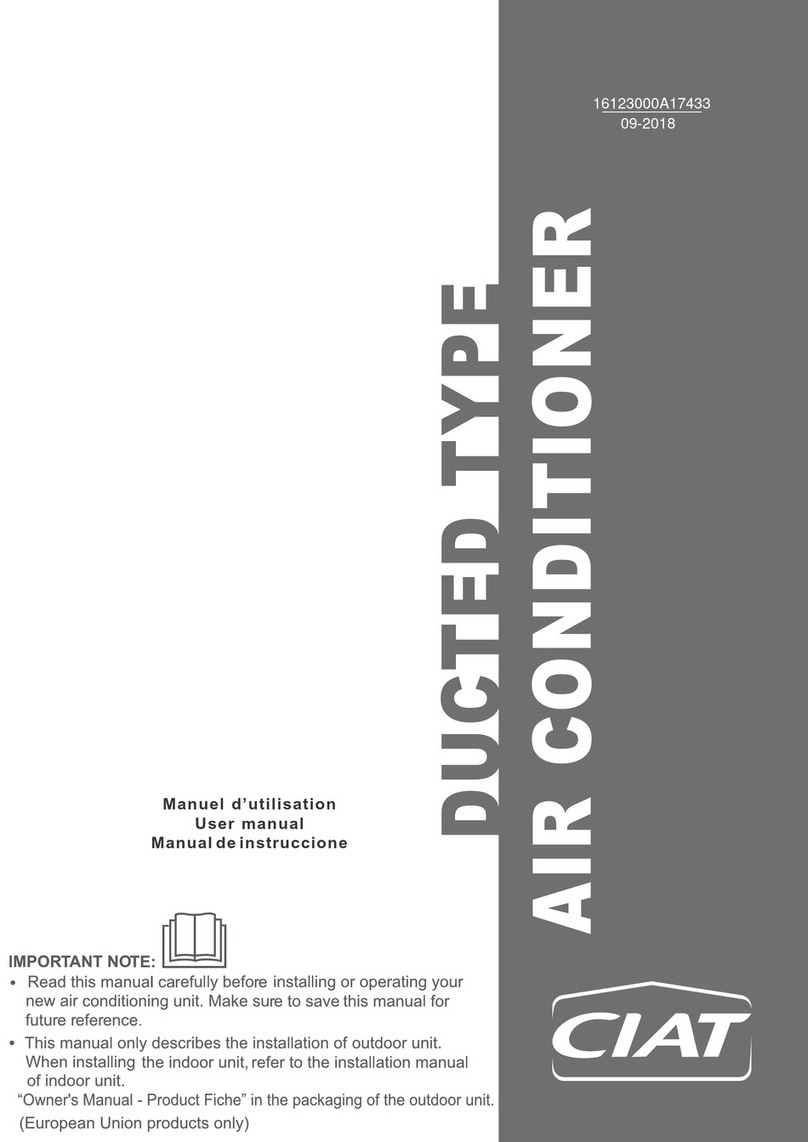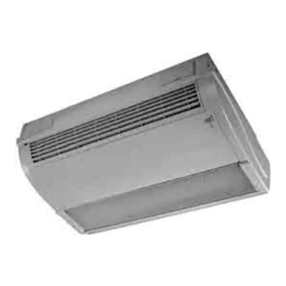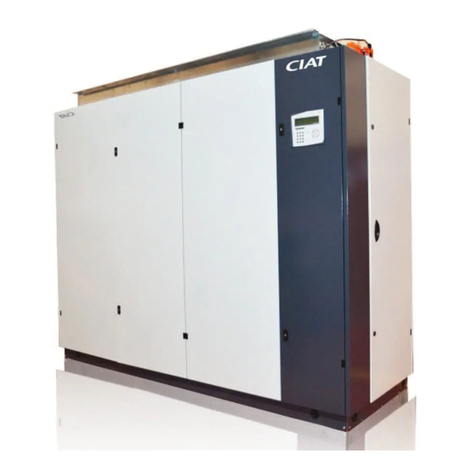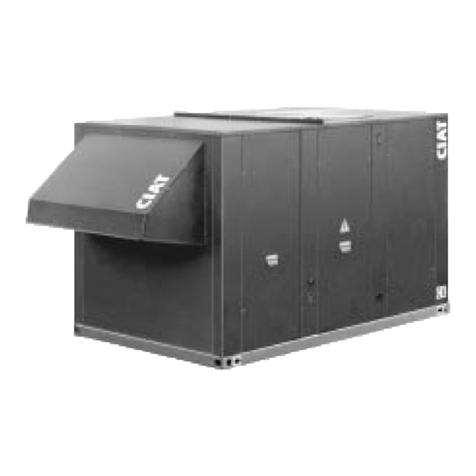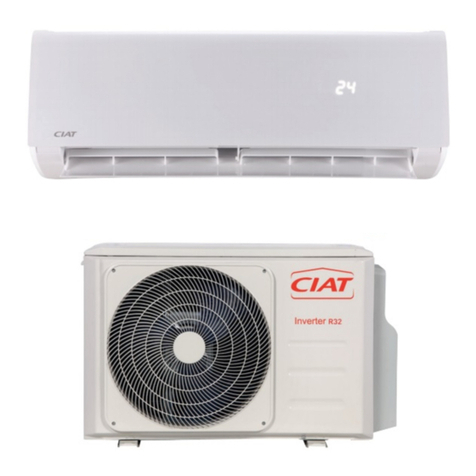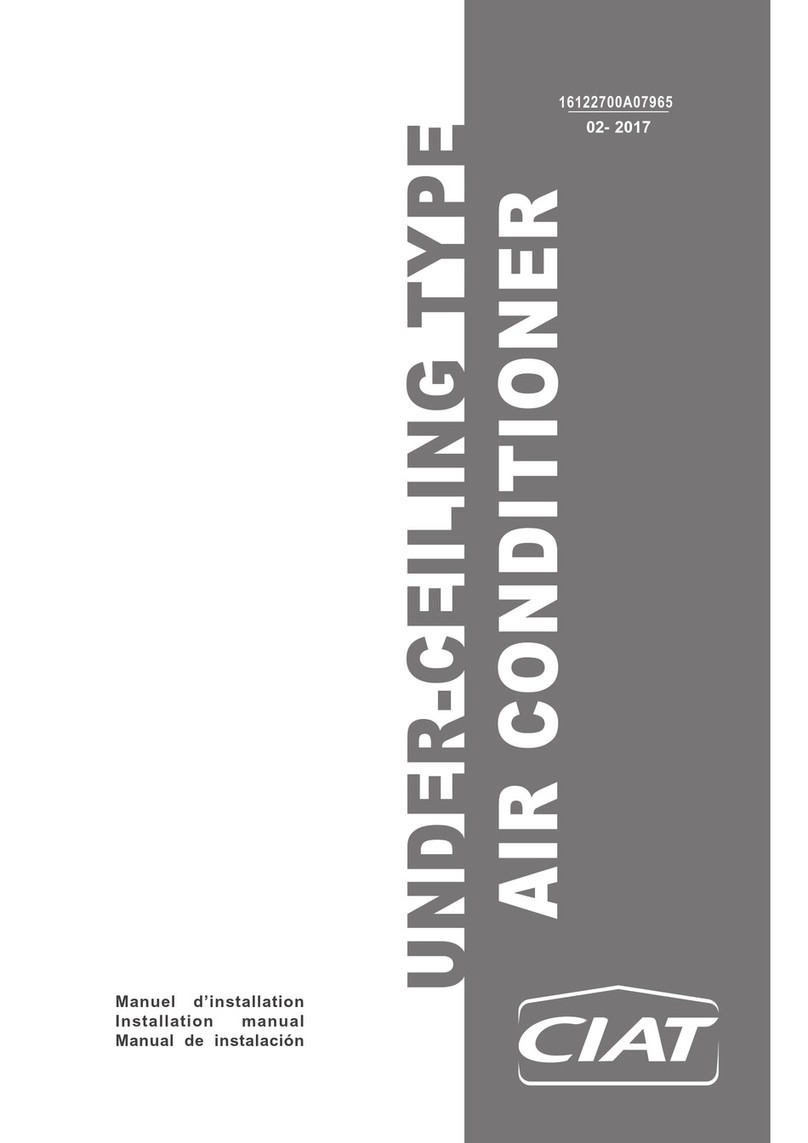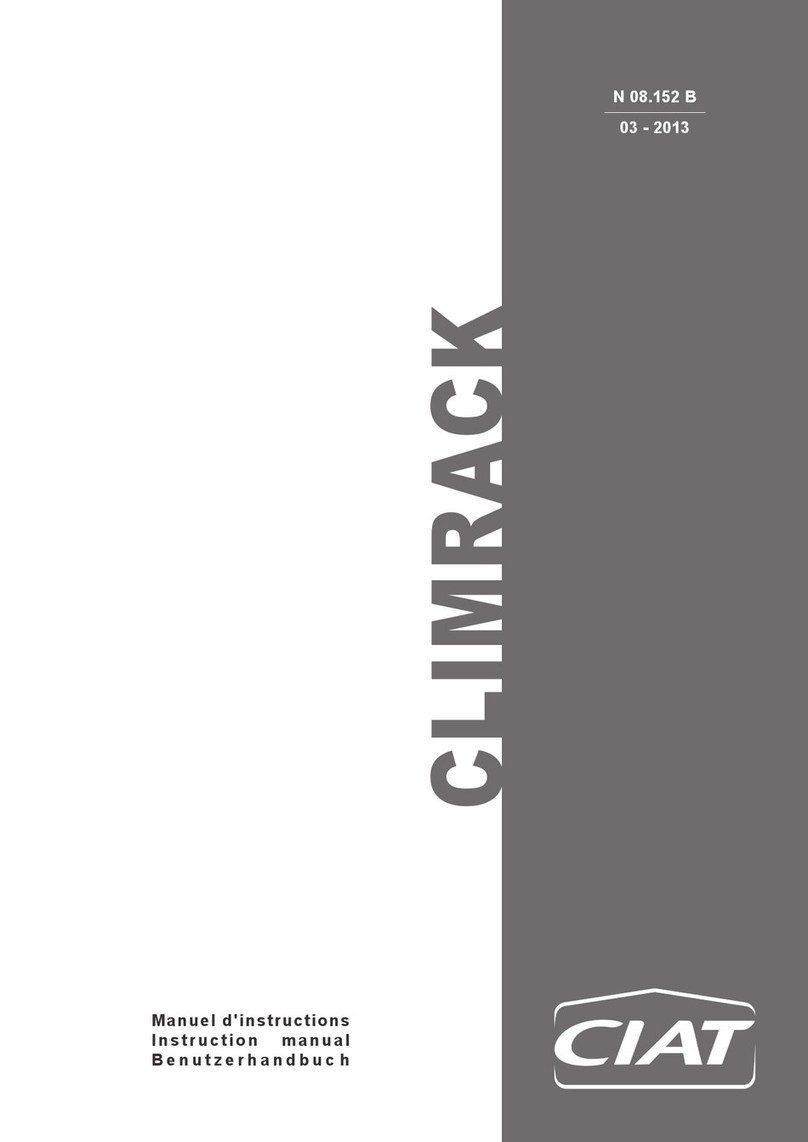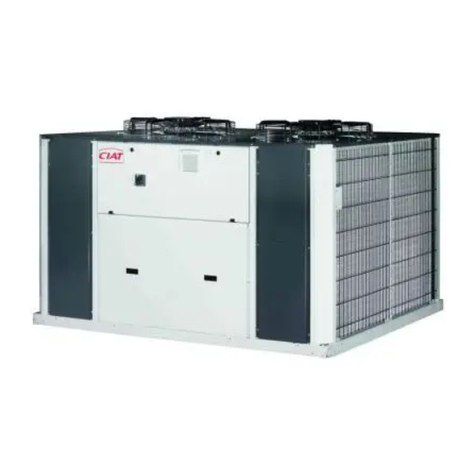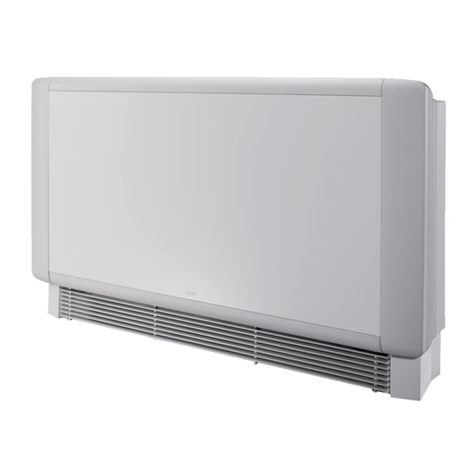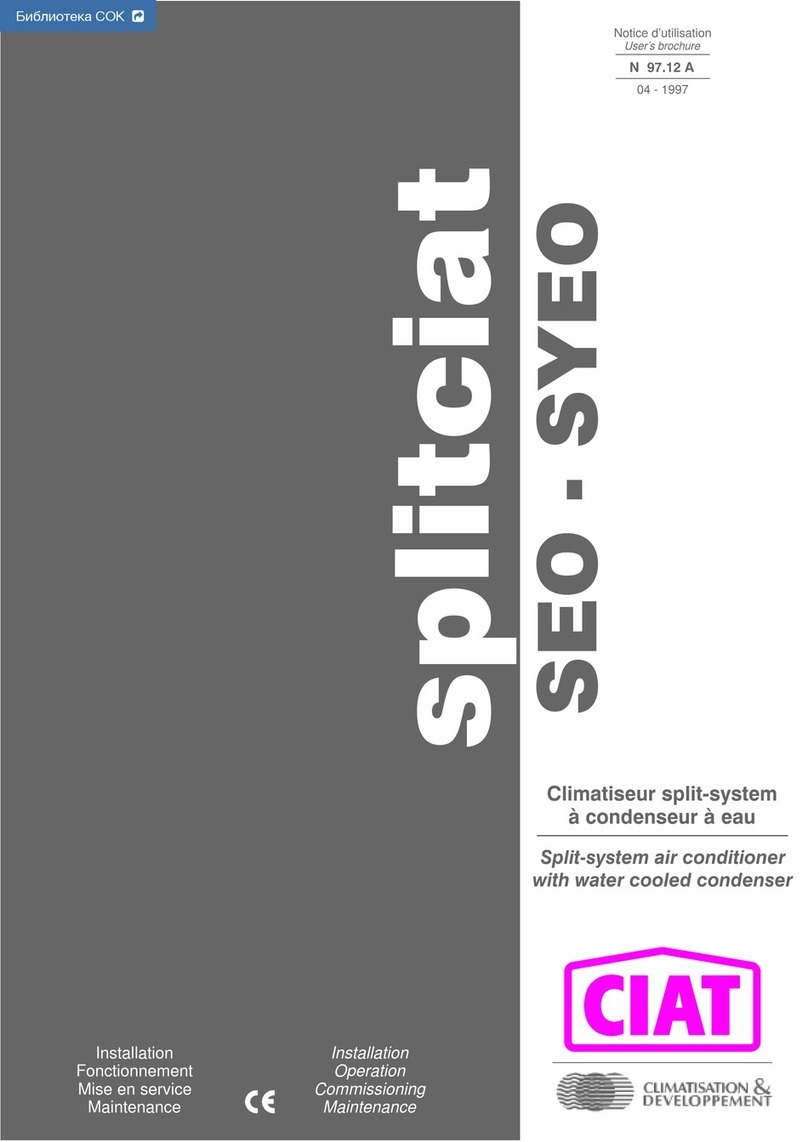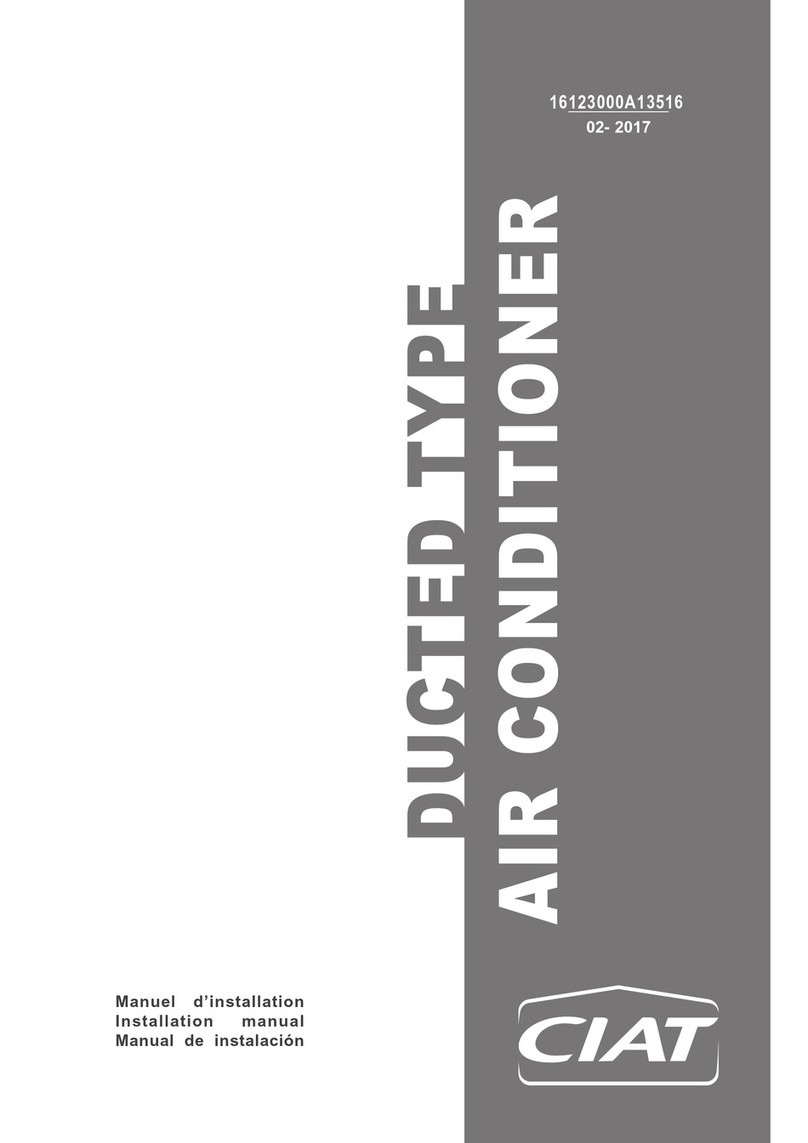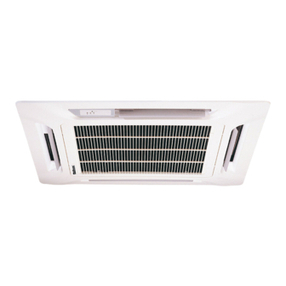3
ITALIANO
1 - presentaZIone......................................... 48
1.1 - Informazioni generali R-410A...................... 48
2 - proCedure dI sICureZZa.................. 49
2.1 - Informazioni generali..................................... 49
2.2 - Utilizzo delle unità......................................... 49
2.3 - Installazione delle unità................................. 49
2.4 - Collegamenti elettrici..................................... 50
2.5 - Assistenza e manutenzione ........................... 50
3 - dImensIonI e spaZI mInImI................. 51
4 - datI teCnICI ................................................ 51
5 - InstallaZIone .......................................... 51
5.1 - Procedura di apertura passaggio
cavi (Fig. 4) .............................................................. 51
5.2 - Modalità di rimozione del pannello
anteriore (Fig. 5) ..................................................... 51
5.3 - Tubo di scarico condensa e fori pretranciati
della base (Fig. 6) .................................................... 51
5.4 - Limiti di funzionamento (Fig. 7/8)................ 51
6 - CollegamentI IdraulICI .................. 52
6.1 - Modulo idronico (Fig. 9/10)........................... 52
6.2 - Collegamenti idraulici (Fig. 12) .................... 52
6.3 - Schema Idraulico Consigliato (Fig. 11)........ 53
7 - CollegamentI elettrICI (fIg. 14) . 54
8 - Collegamento aCCessorI
ausIlIarI (fIg. 14) ........................................... 55
8.1 - Valvola 3-vie.................................................... 55
8.2 - Limitazione Frequenza.................................. 55
8.3 - Segnali di Stop Unità o Sbrinamento........... 55
8.4 - Sonda di Temperature Esterna ..................... 55
8.5 - Deumidicatore o Umidicatore ................. 55
8.6 - Circolatore d’acqua aggiuntivo (ADD WP)55
8.7 - Segnale per richiesta di una Fonte di Calore
Esterna (EHS) ........................................................ 56
8.8 - Ingresso allarme esterno................................ 56
8.9 - Richiesta Sorgente Ausiliaria per produzione
acqua calda sanitaria .............................................. 56
8.10 - Pin Morsettiera............................................. 56
9 - verIfICa del sIstema........................... 57
9.1 - Codici allarmi scheda inverter (solo perr
EREBA) (Fig. 13)................................................... 57
9.2 - Codice allarmi scheda inverter (solo per le
taglie 15H 1Ph e 12HT-15HT 3Ph) (Fig. 13)........ 58
9.3 - Codici di Allarmi scheda GMC (Fig. 13) ..... 59
10 - dIsposItIvI dI proteZIone unItà 59
11 - manutenZIone ....................................... 59
11.1 - Verica della carica refrigerante................. 59
IndICe
ESPAÑOL NEDERLANDS
tabla de materIas Inhoud
2 - veIlIgheIdsproCedures ................... 73
2.1 - Algemene opmerkingen ................................ 73
2.2 - Omgaan met de units..................................... 73
2.3 - Installatie van de units................................... 73
2.4 - Elektrische bedrading.................................... 74
2.5 - Reparaties en onderhoud.............................. 74
3 - afmetIngen en benodIgde vrIje
ruImte ................................................................. 75
4 - teChnIsChe gegevens......................... 75
5 - InstallatIe................................................. 75
5.1 - Procedure voor het openen van de
buisdoorgangen (Fig. 4).......................................... 75
5.2 - Zo verwijdert u het frontpaneel (Fig. 5) ...... 75
5.3 - Afvoerbuis en voorgevormde gaten
basishouder (Fig. 6) ................................................ 75
5.4 - Bedrijfslimieten (Fig. 7/8).............................. 75
6 - WateraansluItIngen.......................... 76
6.1 - Hydro module (Fig. 9/10) .............................. 76
6.2 - Wateraansluitingen (Fig. 12).......................... 76
6.3 - Aanbevolen Hydraulisch Schema (Fig. 11) . 77
7 - elektrIsChe aansluItIngen
(fIg. 14)................................................................... 78
8 - aansluItIng hulpaCCessoIres
(fIg. 14)................................................................... 79
8.1 - 3-wegsklep....................................................... 79
8.2 - Frequentiebeperking...................................... 79
8.3 - Signalen stop unit of ontdooien.................... 79
8.4 - Buitentemperatuurmeter .............................. 79
8.5 - Ontvochtiger of bevochtiger......................... 79
8.6 - Extra waterpomp (ADD WP) ...................... 79
8.7 - AanvraagSignaal voor een Externe
Warmtebron (EHS)................................................ 80
8.8 - Externe alarminvoer...................................... 80
8.9 - Backupverwarming is nodig voor sanitair
warm water.............................................................. 80
8.10 - Pin Klemmenbord........................................ 80
9 - systeemtest ............................................... 81
9.1 - Alarmcodes kaart inverter (alleen
EREBA) (Fig. 13)................................................... 81
9.2 - Alarmcodes kaart inverter (Alleen voor typen
15H 1Ph en 12HT-15HT 3Ph) (Fig. 13)................ 82
9.3 - Alarmcodes GMC Kaart (Fig. 13)................ 83
10 - besChermIngsmeChanIsmen
unIt........................................................................ 83
11 - onderhoud.............................................. 83
11.1 - Controle koudemiddelvulling..................... 83
1 - IntroduCCIÓn........................................... 60
1.1 - R-410A - Informacion general...................... 60
2 - proCedImIentos de segurIdad.... 61
2.1 - Informaciones generales................................ 61
2.2 - Utilización de la unidad................................. 61
2.3 - Instalación de las unidades............................ 61
2.4 - Conexiones eléctricas..................................... 62
2.5 - Asistencia y mantenimiento.......................... 62
3 - dImensIones y espaCIos lIbres ..... 63
4 - datos téCnICos......................................... 63
5 - InstalaCIÓn................................................ 63
5.1 - Procedimiento de apertura de los pasos de los
tubos (Fig. 4)............................................................ 63
5.2 - Cómo extraer el panel frontal (Fig. 5) ......... 63
5.3 - Tubo de evacuación de la condensación y los
oricios precortados de la base (Fig. 6)................ 63
5.4 - Limites de funcionamiento (Fig. 7/8) ........... 63
6 - ConexIones hIdráulICas ................. 64
6.1 - Módulo hidrónico (Fig. 9/10) ........................ 64
6.2 - Conexiones hidráulicas (Fig. 12)................... 64
6.3 - Esquema Hidráulico Recomendado
(Fig. 11) ................................................................... 65
7 - ConexIones eléCtrICas (fIg. 14).... 66
8 - ConexIÓn aCCesorIos auxIlIares
(fIg. 14)................................................................... 67
8.1 - Válvula de 3 vías............................................. 67
8.2 - Limitación frecuencia .................................... 67
8.3 - Señales de Stop Unidad o Desempañado ... 67
8.4 - Sonda de Temperaturas Exteriores .............. 67
8.5 - Déshumidicateur ou Humidicateur......... 67
8.6 - Bomba de agua adicional (ADD WP)......... 67
8.7 - Señal para pedido de una Fuente de Calor
Externa (EHS)........................................................ 68
8.8 - Entrada alarma exterior ................................ 68
8.9 - Es necesario un calentador de respaldo para
agua caliente sanitaria............................................ 68
8.10 - Pin Caja de Bornes....................................... 68
9 - verIfICaCIÓn del sIstema ................ 69
9.1 - Códigos alarmas placa Convertidor (sólo para
EREBA) (Fig. 13)................................................... 69
9.2 - Inversor códigos panel de alarma
(unicamente para tamaños 15H 1Ph y 12HT-15HT
3Ph) (Fig. 13)........................................................... 70
9.3 - Códigos de Alarmas placa GMC (Fig. 13)... 71
10 - dIsposItIvos de proteCCIÓn de la
unIdad................................................................. 71
11 - mantenImIento...................................... 71
11.1 - Vericación de la carga de refrigerante ..... 71
1 - InleIdIng...................................................... 72
1.1 - R-410A - Algemene informatie .................... 72

